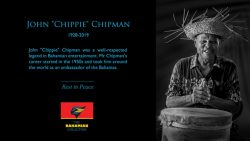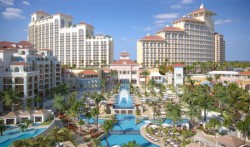The Ministry of Transport and Aviation has struck a deal totaling just over $2.2 million with Canadian based Carmanah Technologies Corporation that will facilitate night flying to airports in the Family Islands.
Under the purchase agreement, Carmanah Technologies will supply 16 of its wirelesscontrolled solar LED airfield lighting systems. The company expects to install the equipment during October and November 2006.
“The installation of these lights to Family Island runways will bring tremendous relief to the residents of these islands who have for years been forced to rely on the use of vehicle lights to illuminate- runways and taxiways during emergencies,” Minister of Transport and Aviation Glenys HannaMartin said on Thursday.
“The installation of the 16 lighting systems beginning in October of this year will permit aircraft landings at these airports during emergencies, primarily medical evacuations at night and during inclement weather conditions.”
The airports identified for immediate attention are Colonial Hill, Crooked Island; Spring Point, Acklins; Staniel Cay, Black Point and Farmer’s Cay, Exuma; Congo Town and Mangrove, Cay Andros; Deadman’s Cay, Long Island; Sandy Point and Moore’s Island, Abaco; New Bight, Cat Island; Port Nelson, Rum Cay; Duncan Town, Ragged Island; Great Inagua; Great Harbour Cay in the Berry Islands and South Bimini.
“The 16 airports identified for immediate attention were selected by virtue of the frequency of medical evacuations which have been required at those airports over the years,” Minister Hanna-Martin said.
“I hasten to add that systems will also be installed at the remaining 13 government airports within the current budget period so that at the end of this fiscal year, that is [June] of next year, we anticipate that every government owned air port on every Family Island will have runway edge lighting systems.”
According to officials; the solar lighting will put The Bahamas on the cutting edge of aviation lighting technology. At present solar lights have already been installed at both Grand Bahama International Airport and the Lynden Pindling International Airport for emergency purposes.
“In addition to being certified by the International Civil Aviation Organization (ICAO), the lights are extremely cost effective, and once installed are virtually maintenance free,” Minister Hanna- Martin said. “Most important for The Bahamas is the time saving factor which will result in the systems being installed almost simultaneousy.”
In a statement, the company’s CEO Art Aylesworth said the agreement came about as a result of the work that was done on the main runway at the former Nassau International Airport [NIA].
“Carmanah originally provided the Bahamas’ main international airport with temporary use solar LED runway edge lighting to land commercial airliners while the primary runway was undergoing airfield maintenance,” he said.
“The installation proved very successful and we are pleased to now strengthen our relationship with the, Nassau [Civil Aviation Authority] by supplying reliable, cost-effective solar LED lighting solutions for its remote island airports.”
The majority of Family Island airports identified for the lighting programme do not currently have airfield lighting in place to accommodate routine nighttime traffic and emergency air services.
The deal was struck against the background of electrical infrastructure on these Family Islands being limited at times. The solar-powered lighting solution that Carmanah is providing is intended to be installed without any disruption to airfield operations, and avoids the capital, maintenance and operating costs associated with diesel generator-powered systems.
The systems supplied to The Bahamas will include Carmanah’s advanced A704-5 solar-powered LED wireless airfield runway edge and threshold lights with centralized wireless control, according to company officials.
These units are designed to operate automatically from dusk to dawn year-round under all types of environmental conditions. They can also be programmed using a centralized handheld controller for ondemand activation, selecting intensity levels or running diagnostics, according to officials.
Carmanah officials also pointed out that the life of each system could be as long as 30 years.
BY STEPHEN GAY, Bahama Journal



